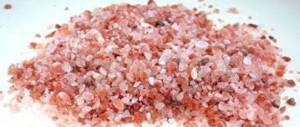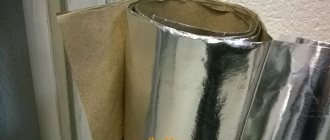Home page » SPA procedures » Aromatherapy » Wormwood for a bath – a natural way to improve the body’s health
The bathhouse has long been a place where people came not only to wash themselves, but also to improve their health, improve their overall well-being, and get rid of stress. The main procedures in the bathhouse are warming up the body and aromatherapy with various medicinal herbs. In ancient times and today, bath brooms are made from herbs; their healing effect is enhanced with essential oils.
Various types of herbs and essential oils are used for procedures, depending on the purpose being pursued. Today, the bathhouse is not only a place for healing the body, but also, if desired, a spa salon.
Herbs for baths
Wormwood is most often used in the bath, as the herb has antiseptic properties.
It is capable of destroying many types of bacteria and harmful microorganisms when inhaling its vapors, and also helps to relax and calm the nervous system.
This plant is successfully used for the following diseases:
- Rheumatism;
- Diseases of the cardiovascular system;
- Colds.
Regular use of it in the bath will be an excellent prevention against viral and bacterial infections during the cold season. Aromatherapy in a bath with this type of herbs will improve performance and strengthen the immune system.
Another herb that is actively used in bath procedures is mint, which has a disinfectant effect, improves the functioning of the digestive tract, relieves nausea, and normalizes the functioning of the heart and lungs.
Melissa is also often used in the bath, which calms the nervous system and irritated skin, relieves tension, relaxes muscles, and has a beneficial effect on sleep.
Video lesson: how to choose herbs for making tea and infusion
The herb for the bath is selected taking into account the characteristics of its action.
As a rule, medicinal herbs are used, from which craftsmen prepare steaming for the bath, even with their own hands. The most popular in our country are:
- Sagebrush. Wormwood decoction vapors have a strong antimicrobial effect, so wormwood-based sauna steaming is used in the fight against colds, chronic diseases of the respiratory system and ENT organs, and other infections. It is believed that the aroma of wormwood increases performance, physical endurance, improves concentration and memory, helps to collect thoughts and make difficult decisions. It is used as a natural immunomodulator and regulator of digestive processes.
- Mint. Our ancestors believed that the aroma of mint clears the mind and helps thought processes. It treats colds, relieves cramps and headaches, helps cope with nausea and general malaise.
- Melissa. A recognized remedy in the fight against physical fatigue, tension and pain in muscles, joints, and back. Helps relieve itching after bites of blood-sucking insects, relaxes, soothes and puts you in a peaceful mood. Normalizes sleep, but at the same time eliminates increased drowsiness.
- St. John's wort. Contains phytoncides that have antiviral and antimicrobial effects. When steamed, they are released into the air and enter the body with breathing. It has an antidepressant effect, helps relieve pain and inflammation, improve skin condition and get rid of various rashes.
- Chamomile. The most affordable and popular plant. It is famous for its disinfectant, anti-inflammatory, soothing and wound-healing properties. Its aroma helps to calm down, get rid of stress, and relax after a hard day.
- Hop. At first, its aroma has a strong relaxing effect; it is not for nothing that a person who has lost control over emotions, movements and feelings is said to be “tipsy.” But this is a temporary effect. After visiting a steam room with a hop brew, a feeling of vigor appears, your mood improves, and your overall vitality rises.
- Linden. One of the best remedies for treating diseases of the respiratory system and cleansing the body of metabolic products (“toxins”). It has a pronounced diaphoretic effect, which is enhanced in the bath due to high temperature and steam pressure. With sweat, excess intercellular fluid comes out, swelling is relieved, and unnecessary and often toxic substances are removed. Linden steaming is widely used for cosmetic purposes - it helps fight excess weight and cellulite, improves skin condition, removes bags under the eyes, and makes age-related changes less noticeable.
- Yarrow. Contains many biologically active substances (essential oils of flavones, alkaloids, resins), due to which it has anti-inflammatory and antimicrobial effects, improves appetite and normalizes digestion. This plant contains valeric acid, which helps normalize sleep, relieve psycho-emotional stress, and eliminate anxiety and stress.
- Horseradish. It’s hard to imagine, but this plant is also widely used to prepare steaming for baths. Anyone who has managed to take root in their garden can prepare it with their own hands. The tart aroma of horseradish tones well, increases performance, and helps cope with any infections and colds.
- Black currant. To prepare steaming, its leaves are used, which are preferably collected at the beginning of summer, when the concentration of biologically active substances in them is maximum and toxins are insignificant. The aroma of black currant and the flavonoids it contains helps relieve tension, get rid of stress, improves mood and puts you in a positive mood.
https://www.youtube.com/watch?v=J3JUyYeIEM4
By combining herbs with each other, various preparations are prepared. For a bath, you can use a combination of any of the listed herbs - they are all in harmony with each other.
Important! Be sure to familiarize yourself with the effects of herbs, indications and contraindications before using them in a bath. You need to be careful when using herbs if you are prone to allergic reactions.
Composition and properties of wormwood
Wormwood is one of the oldest and medicinal plants on the planet; the following components can be found in its composition:
- Natural amino acids;
- Organic acids;
- Potassium salts;
- Vitamins (A, B, C);
- Tannins;
- Minerals;
- Proteins;
- Resins;
- Bitter glycosides;
- Flavonoids;
- Alkaloids;
- Phytoncides;
- Saponins.
Thanks to such a rich composition, the use of wormwood for a bath can provide such beneficial properties as:
- Toning the body;
- Normalization of the activity of the central nervous system;
- Elimination of pain and spasms;
- Diuretic effect;
- Antifungal action;
- Anti-inflammatory effect.
From classic to exotic
According to Vladimir Poroshkov, the head of the Kupalo bath culture center, even for classic steaming there is a special algorithm that is not known to everyone, Poroshkov said.
Then, when a person warms up in two to three minutes, light contact is made with a broom. “Next we move on to working with the body, hitting harder with a broom. Then we ask the guest to turn over and then, depending on the person’s characteristics, we either continue intensive work or take a break,” Poroshkov continued.
The optimal temperature for such vaping is 60 degrees. The steammaster advises drinking only clean water in the bath; it is quite normal to drink several liters of water during the bath procedure.
“Contrast procedures are always beneficial if they are applied on time. As a rule, after contrast, you need to return the heat,” added Poroshkov.
According to him, the division into different types of soaring is arbitrary, since “the soaring experience of each guest is unique and cannot be repeated.”
Types of wormwood
Science identifies approximately 400 species of this plant, and approximately 150 of them grow in Russia. In folk medicine, the following types are most often used:
- Medicinal;
- Bitter;
- Paniculata;
- Lemon.
Medicinal
This type of grass grows on roadsides, in gardens, and wastelands. Healing decoctions are made from it, which are intended to improve appetite and eliminate nervous disorders.
Gorkaya
This plant variety has a specific smell and bitter taste. It can grow anywhere, in forests, fields, meadows, cultivated soil and wild. Preparations and folk remedies containing it in their composition successfully fight epilepsy, help get rid of insomnia, depression, strengthen the immune system, destroy parasites, and treat women's diseases.
Paniculata
Paniculata blooms from July until late autumn.
In folk medicine, it is used to make wormwood brooms for baths to treat rheumatism and respiratory diseases.
In order to use the plant for medicinal purposes, only its flowers, stems and leaves should be collected.
Lemon
Lemon wormwood or abrotan has been known to people since antiquity; its healing decoction was drunk for snake bites and fever. Also, this particular type of wormwood is used to prepare seasoning; it is from it that essential oil is obtained.
Brief excerpts from the general course of botany
Probably few plants have such a strong, unique and recognizable aroma as wormwood. If you want to feel the smell of the July steppe warmed by the sun, rub a leaf of wormwood and thyme in your fingers.
This plant belongs to the Astrov family, the same one whose representatives are so widely represented in flower gardens and palisades on the outskirts of the city.
The most iconic representatives of the genus Artemisia are wormwood, common wormwood or Chernobyl, and medicinal wormwood or lemon.
Wormwood
A widely known plant with a characteristic silver color. It is one of the oldest medicinal plants and the most bitter representative of the domestic flora. It is the main component of such an iconic and controversial alcoholic drink as absinthe. The maximum concentration of nutrients in the aboveground part of this plant is observed at the beginning of flowering, in the upper shoots.
Wormwood actively irritates nerve endings and stimulates the production of gastric juice, which makes it a popular remedy for awakening appetite. In the Don and Kuban Cossack villages, a glass of wormwood tincture was an indispensable aperitif before any significant feast. In general, the effect of the essential composition contained in bitter wormwood on the human central nervous system is similar to camphor.
At one time, according to the results of clinical trials, it was included in the pharmacopoeia of more than 20 countries, including the USSR. One of the well-deserved and proven qualities of this plant is its pronounced insecticidal properties. Since ancient times, in the bathhouses of the steppe region, this plant has been widely used to combat ants, fleas and cockroaches.
Common wormwood
A perennial, tall herbaceous plant, with a characteristically dark-colored stem - a blade of grass, from which, in fact, it received its popular name - Chernobyl. It has a pronounced pleasant spicy aroma, which contributed to the mass production of essential oil from wormwood raw materials in Europe.
In Zaporozhye farmsteads and winter huts, in the lower reaches of the Dnieper, Chernobyl was widely used as a seasoning for the preparation of pork hams and bacon.
We suggest you familiarize yourself with: Should you close the vents in the bathhouse in winter?
The plant acquires the greatest strength and concentration of useful substances about a month before the seeds ripen, at which time it is harvested.
The stems of this plant become woody over time, almost to the top, which makes them more resistant to mechanical stress compared to their closest relatives. Lemon wormwood has the most exquisite aroma, which is very unique, and resembles some mixture of the smell of dill, pine needles and lemon. In pre-revolutionary Russia, the aerial part of this plant was used as an air freshener in public institutions.
Moreover, it should be noted that when drying, the bitterness is lost and the raw material acquires a pronounced spicy and burning taste. It goes well with various sauces that are usually served with thick, fatty meat foods. Included in the recipe as an additive to the rather exotic wormwood bread. In official medicine, this plant has not found such wide use as wormwood, and in medical practice, for the most part, it is used as a homeopathic remedy.
Indications for use
The medicinal plant is used for the following types of ailments:
- For stomach diseases;
- For fever;
- With neurasthenia;
- For parasitic infestations;
- For tuberculosis.
For stomach diseases
A herbal decoction successfully fights pain and cramps in the stomach if taken three times a day. The plant also helps cure digestive disorders, flatulence, and inflammation of the rectum. You can take it in the form of wormwood tea or alcohol tincture.
Important! A medicine made from wormwood in powder form is well suited for treating the stomach, since it is this form that penetrates into all parts of the gastrointestinal tract, including the lower ones.
For fever
For this type of disease, wormwood is used as an antipyretic.
For neurasthenia
Wormwood infusion is good for neuroses, insomnia and migraines. Baths and saunas with wormwood are also used for these purposes.
Also, a tincture of this herb in alcohol helps fight depression and improves body tone.
For parasitic infestations
When infected with worms, this herb is an indispensable, and most importantly, completely natural remedy. To destroy parasites from wormwood, cloves and tansy, a special composition is prepared, which causes the death of both adults and larvae and eggs.
Important! Despite the fact that the medicine for parasites contains only natural ingredients, it should be taken with caution, so you should consult your doctor before using it.
For tuberculosis
As an adjuvant therapy, wormwood decoction is often prescribed in the treatment of tuberculosis and other lung diseases.
Benefits and harms
The very rich composition of wormwood benefits the human body:
- good diuretic;
- has anti-inflammatory, antifungal and antiseptic effects;
- calms the central nervous system;
- charges the body with energy;
- eliminates pain and spasms.
But at the same time, if you do not consult a doctor before using wormwood, you can cause serious harm to your health. This is especially true for various tinctures and decoctions. In this case, it is extremely difficult to track how wormwood affects a person, so an overdose of wormwood may occur. Experts have long known that if you take decoctions in uncontrolled quantities, a person will develop a central nervous system disorder.
Brooms with the addition of this healing herb allow you to:
- expand the pores, in which case toxins are effectively removed from the body;
- improve blood circulation;
- light massage has a beneficial effect on the skin;
- speed up metabolism in the body;
- increase sweating.
If you use brooms made from freshly picked wormwood in the bathhouse, the effect will be more noticeable. Since tension, fatigue will be relieved, headaches will go away. Also, essential oils and phytoncides improve human performance.
Features of a wormwood broom
Each bath broom has its own characteristics, for example, one made from wormwood has a strong odor, which ensures air disinfection. But this aroma may not be to everyone’s taste; those who react sharply to various strong odors should avoid using it.
Due to the fact that wormwood is a grass, a broom made from it will be extremely fragile and can only be used once.
Experts recommend adding a few twigs of wormwood to regular classic birch brooms , so the smell will be less pronounced, the broom itself will be durable, and the beneficial effect will remain.
Procurement of raw materials
As we have already noted, it is necessary to cut the shoots of this plant so that, on the one hand, they accumulate the maximum amount of useful substances, and on the other, the above-ground parts acquire sufficient strength for further use as a bath broom. It is worth noting that this period, to a greater extent, occurs from the beginning of flowering to the formation of seeds.
To make a broom, wormwood for a bath is cut to a length of 50 - 60 cm, counting from the top of the shoot. Wastelands should be considered the most favorable for harvesting, since along roadsides and between fields, plants can be exposed to a number of unfavorable factors of an endogenous nature.
A prerequisite for preserving high-quality raw materials is to lay out the collected mass in a small, loose, highly permeable layer under sheds and in attics, in order to dry it as quickly as possible. The end of this process should be considered the moment when the stems acquire the ability to break. The brooms are tied with jute twine, forming a handle with a diameter of no more than 5 cm.
Store the wormwood broom in the technical room of the bathhouse, which is sufficiently ventilated and does not have high humidity. You should not neglect periodic inspections of the products, since grass brooms are more susceptible to the risk of rot than from tree shoots. As a preventive measure in the fight against insects, such raw materials can be placed in other rooms of the bathhouse, in particular, in dressing rooms or rest rooms.
When to harvest wormwood for brooms
Most people know how to use wormwood in a bath, but not everyone knows when to collect it in order to make a broom. Suitable types of herbs for making brooms include paniculata, bitter, lemon, and medicinal.
You should start making a broom when the plant has finished flowering. The timing of its flowering varies for each species, the approximate period being from July to October. The grass should be collected before it has time to dry; it should be dried in a cool, dark place.
What is parking?
Herbal steaming for a bath is a small bag made of natural fabric filled with either a specific type of herb or a mixture of herbs. In essence, it is similar to a tea bag and is also used only once. The herbs in the bag are in a crushed state. Some bathhouse regulars prepare their own herbs for steaming, just like brooms. However, often there is no time left to collect, prepare and dry the herbs, and then ready-made fragrant bags are purchased at a bathhouse supply store.
Contraindications
The benefits and harms of wormwood in the bath have long been one of the most discussed issues. Taking a steam bath using this plant is not recommended for pregnant and lactating women, those people who suffer from asthma, stomach ulcers, anemia, or who are allergic to this herb.
They should also refrain from taking medications with this plant. Wormwood is a fairly useful whole plant and can help cure many diseases, but it also has a specific smell and some restrictions on taking medicines from it and bathing procedures using it.
In order for therapy with this herb to be successful and not cause side effects, proportions and dosages must be observed when preparing various potions from it.
How to use steaming in a bathhouse?
So, we have a ready-made steamer for the bath at our disposal. How to use this miraculous remedy?
The recipe is very simple. After heating the bathhouse, you need to scoop a little boiling water into the ladle and lower the bag of steaming water into it for 10-15 minutes. Most likely, already at this time the unique aroma of herbs collected together will become audible.
In the future, before visiting the steam room, you will need to throw this ladle onto the stones, after removing the bag. The aroma will fill the steam room and the steam will become healing! This procedure is well known to those who use essential oils in the steam room. They are often taken to a bathhouse or sauna simply because they do not know what steaming is and how it can be used.
Important! If during a visit to the steam room you experience unpleasant sensations or your health worsens, you should ventilate the room and do not use this herbal composition.
By wisely using different herbs and infusions, you can significantly increase the healing effect of bath procedures, improve your well-being and solve various health problems. The main thing is to use herbs thoughtfully, taking into account the characteristics of their action.










